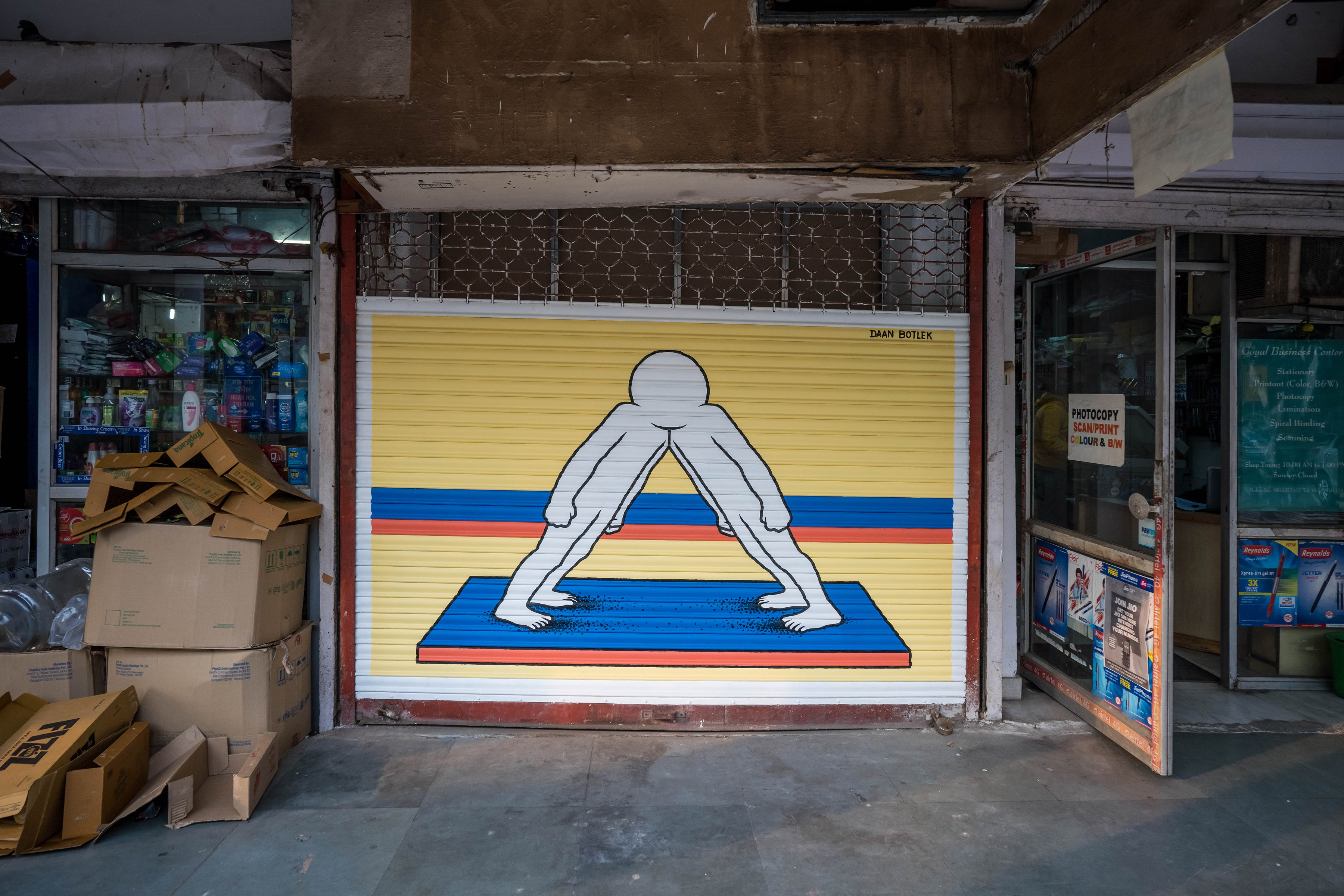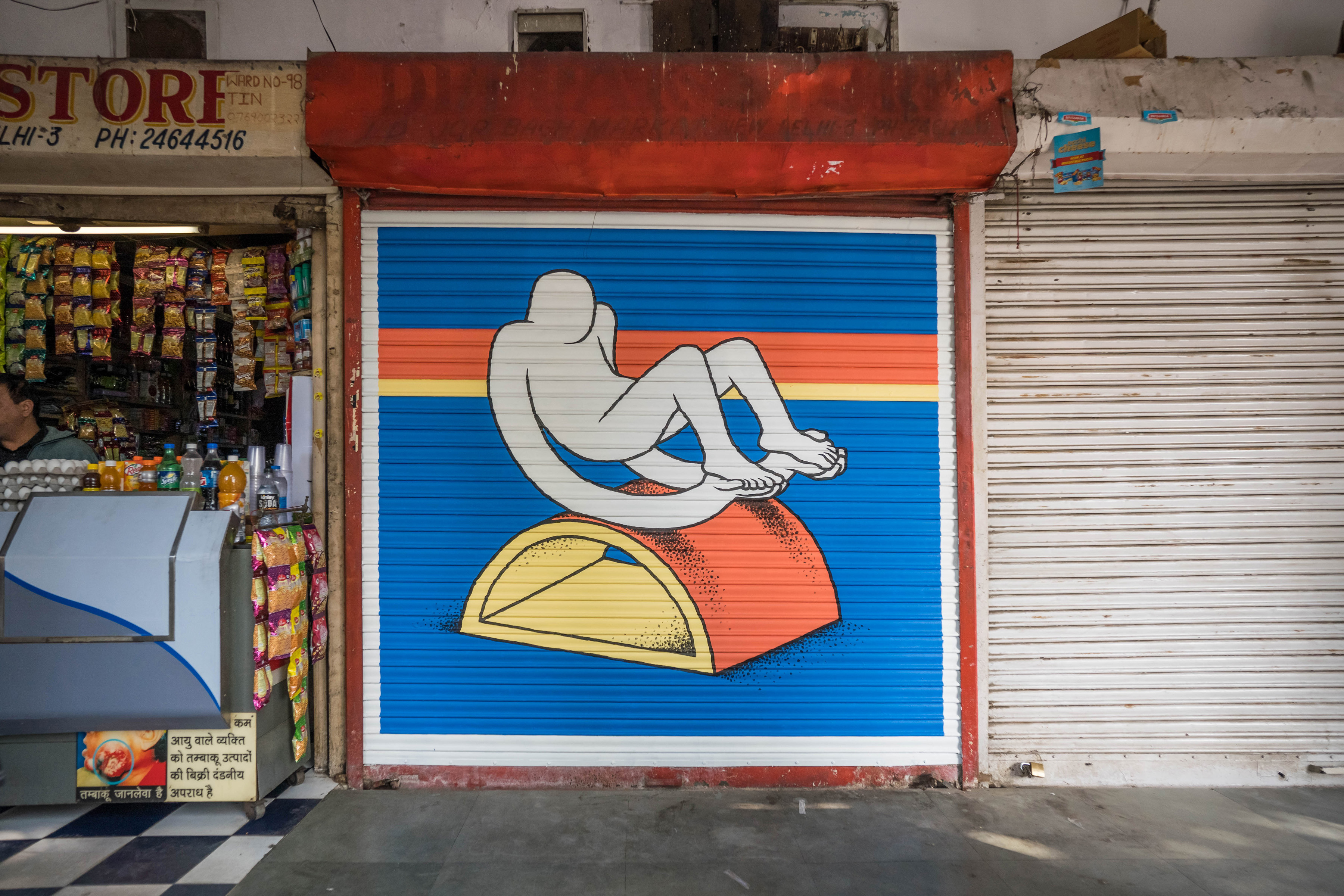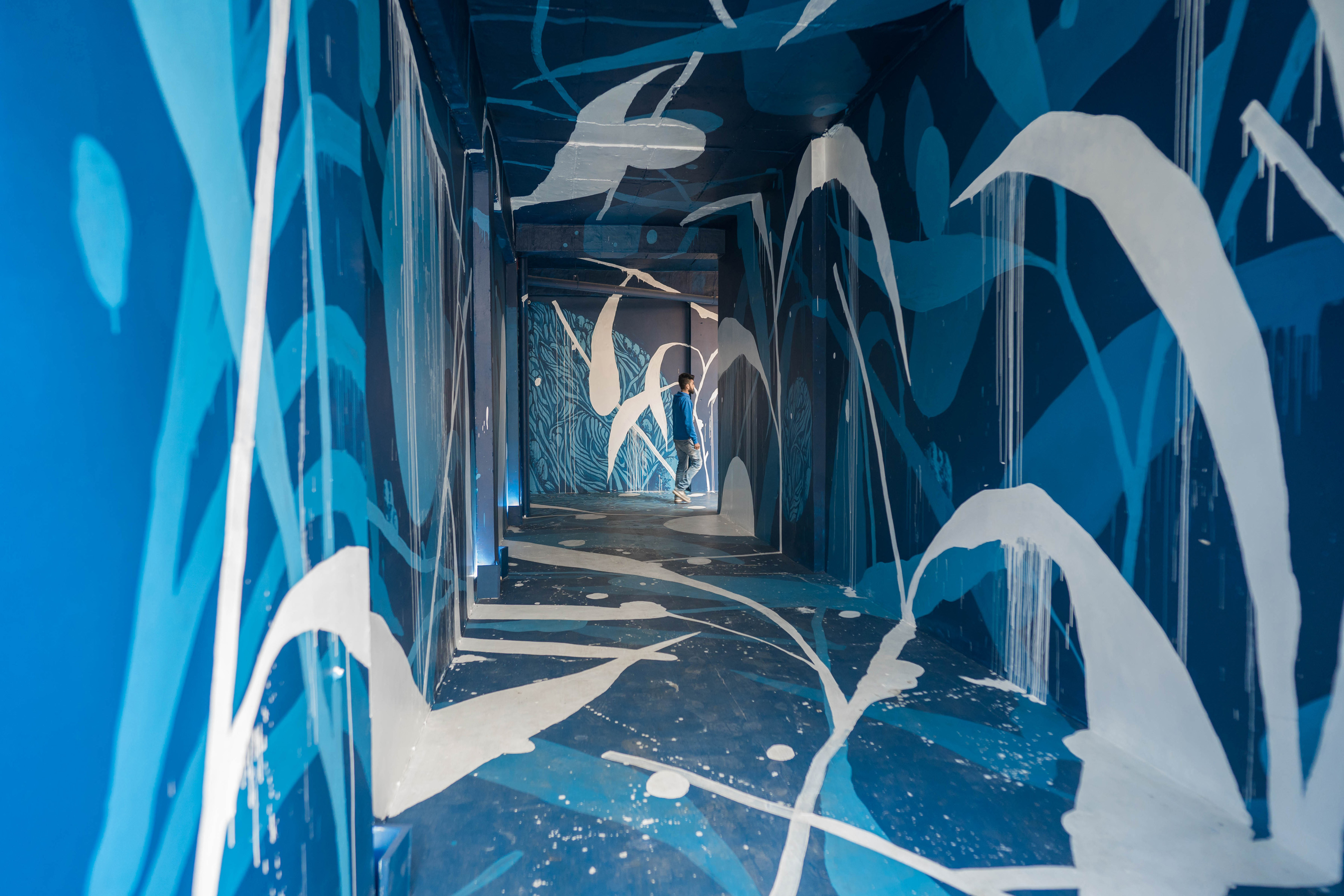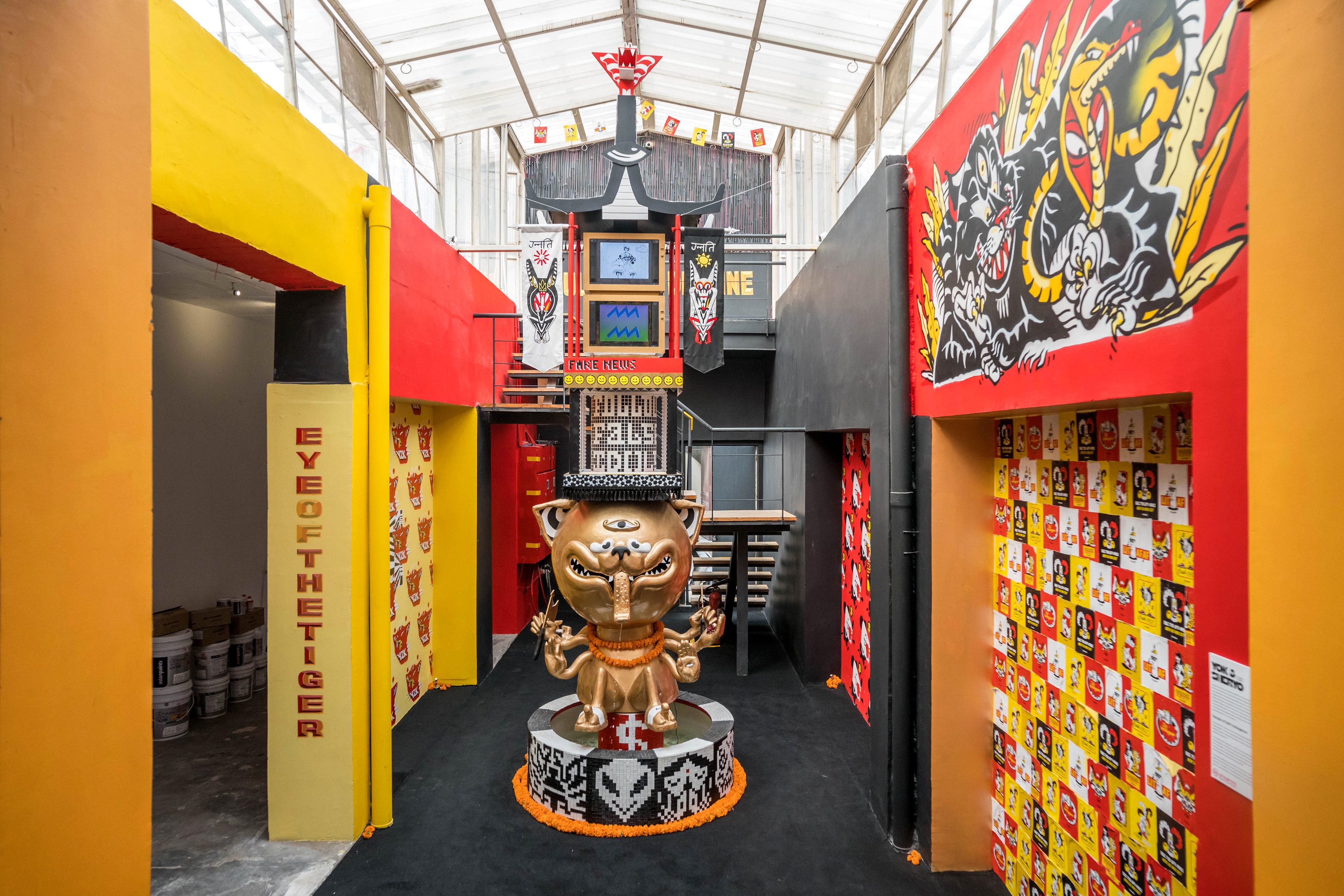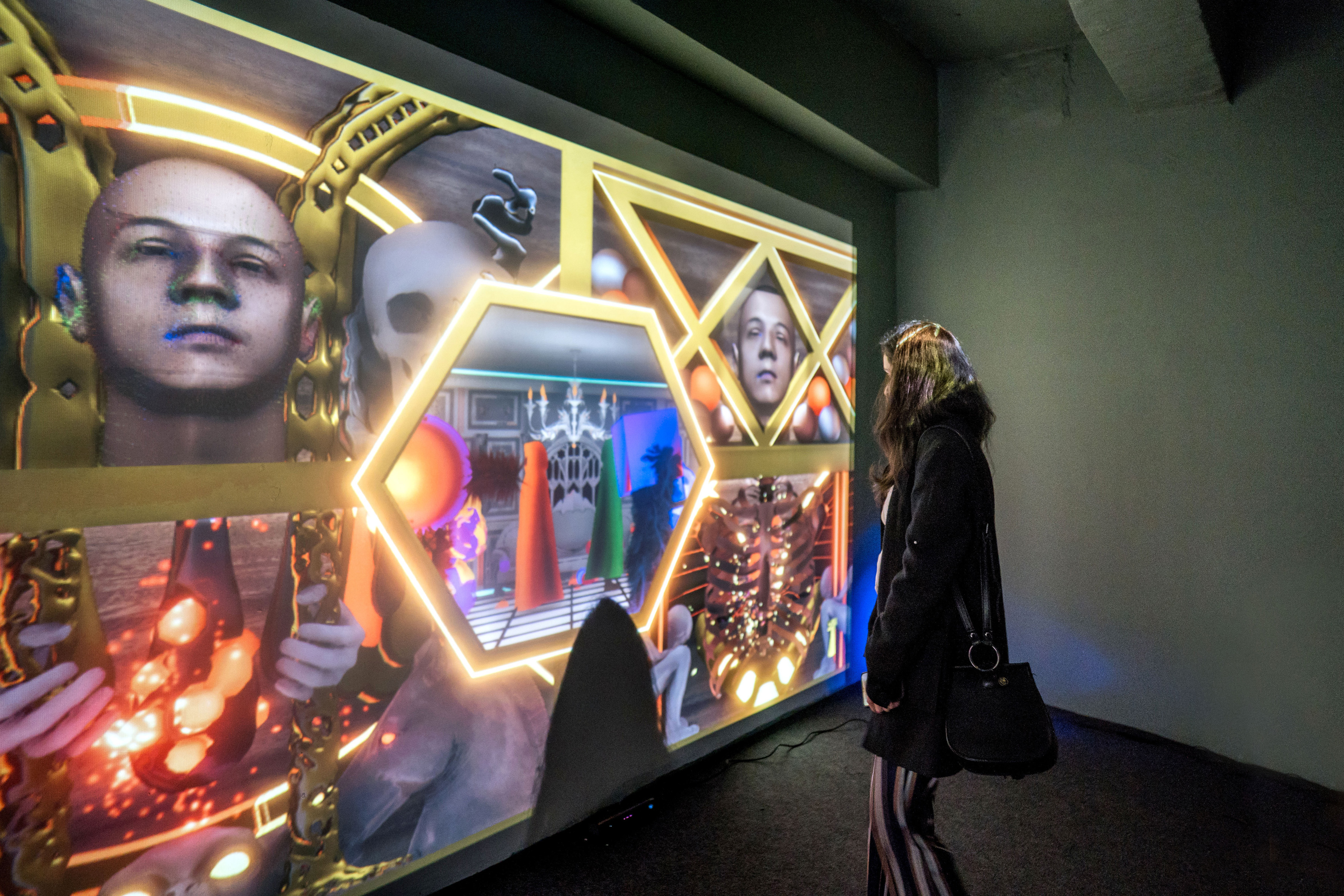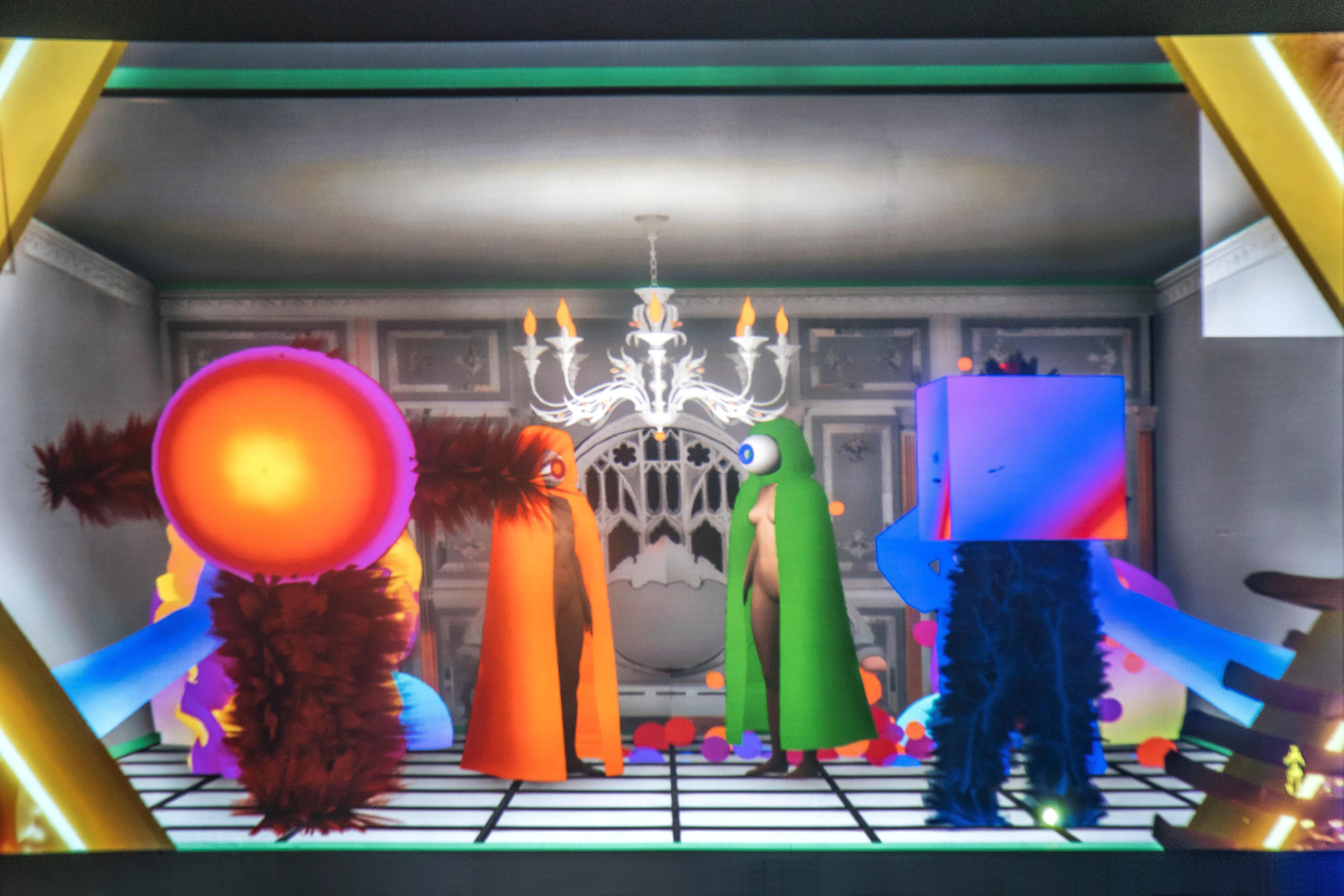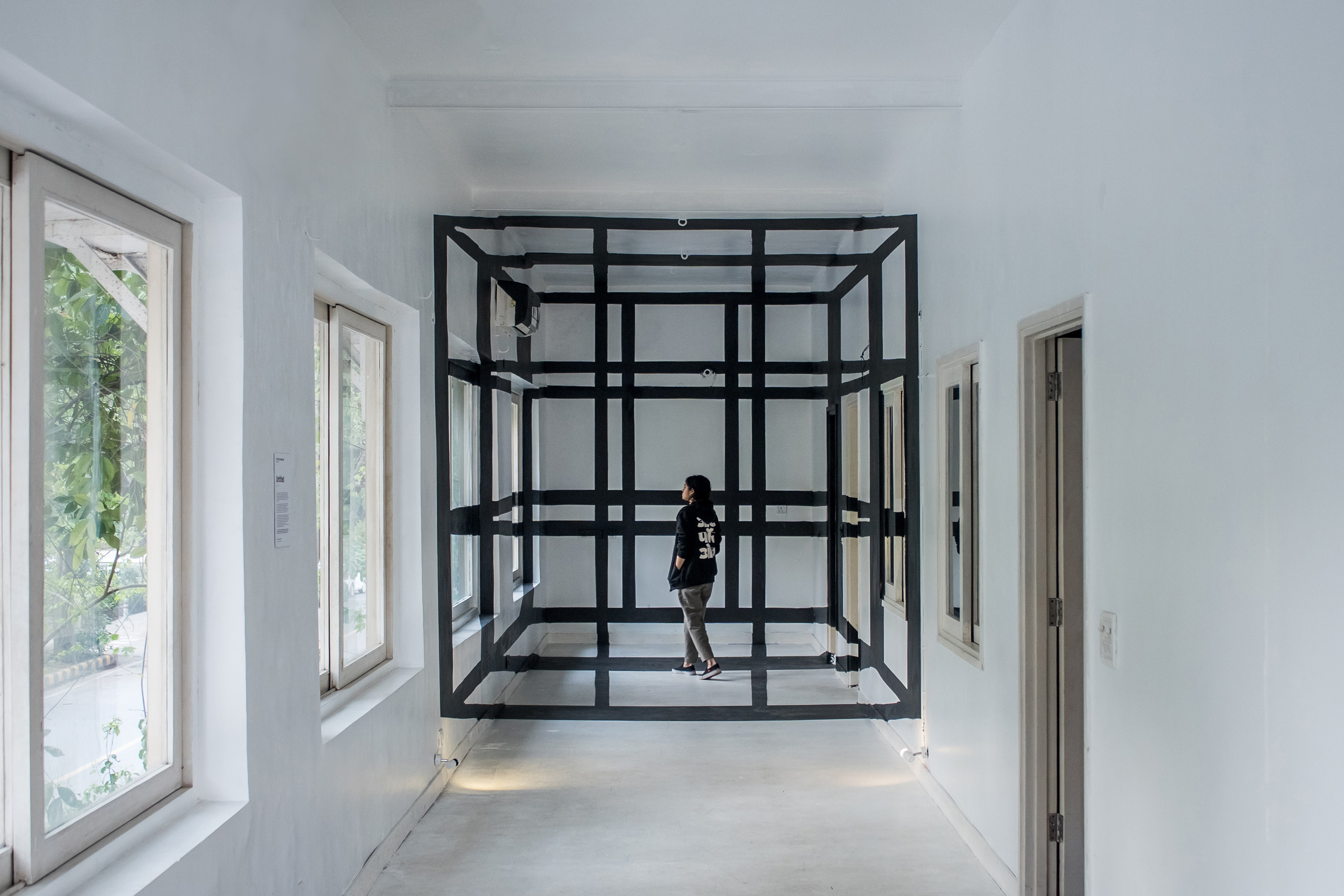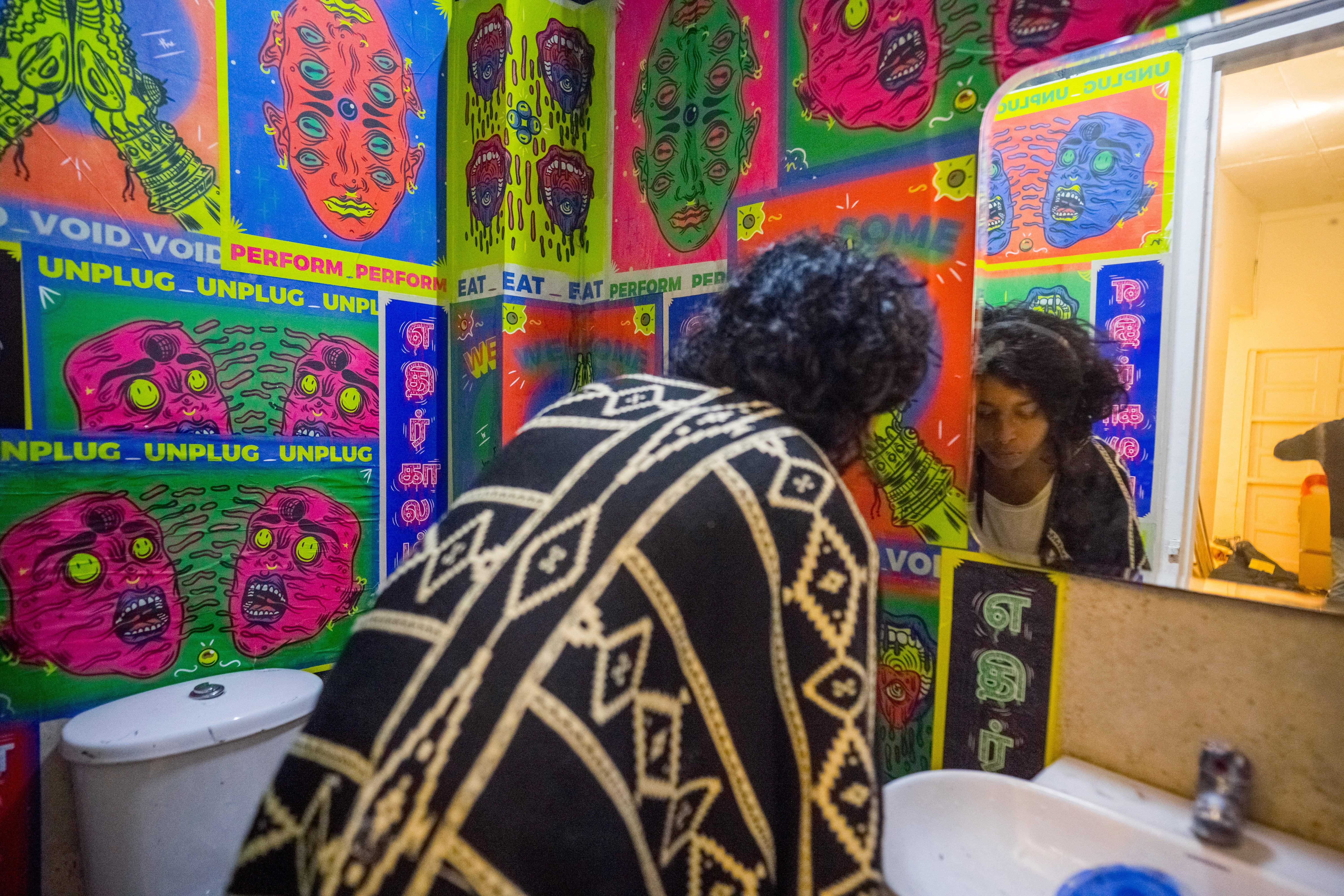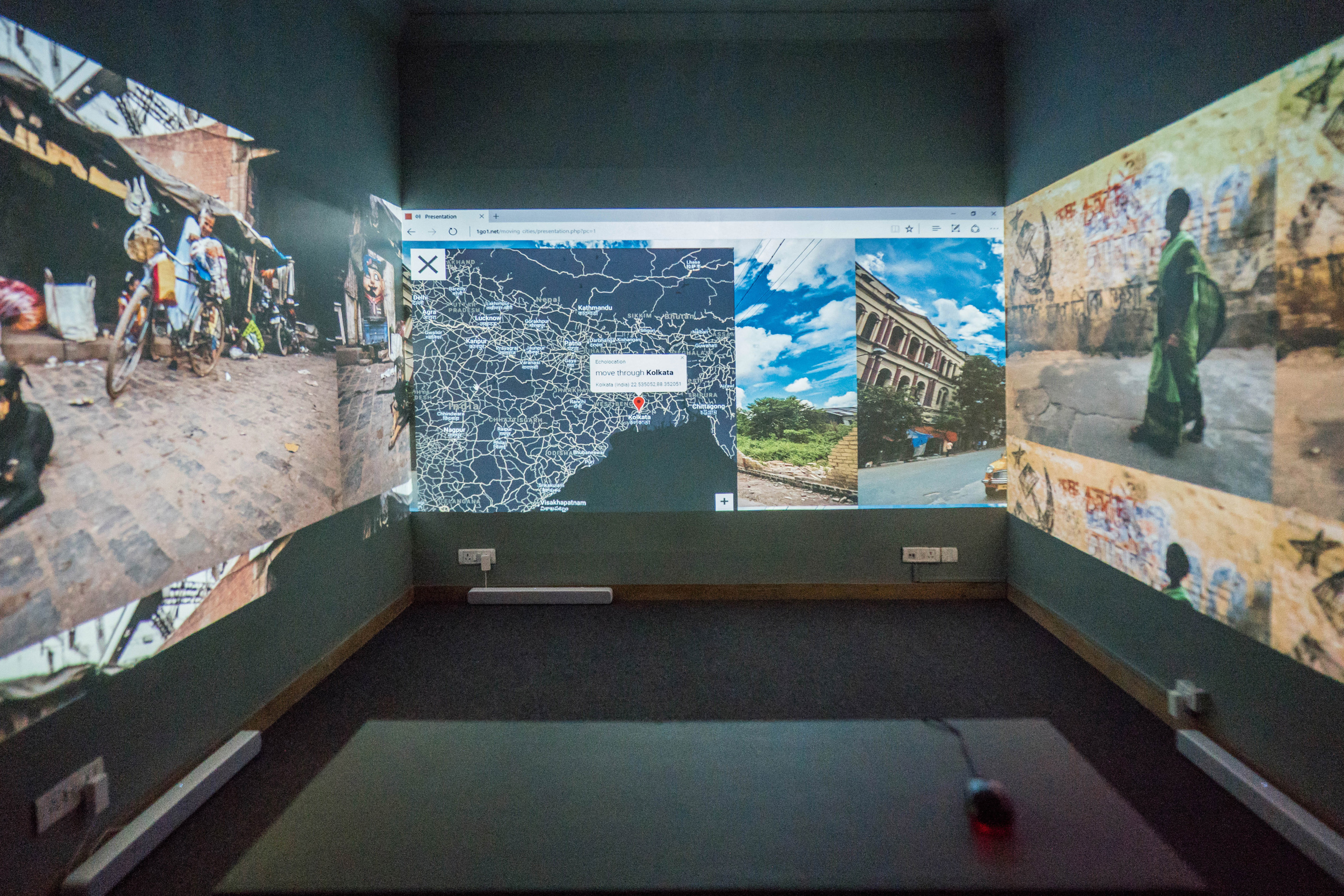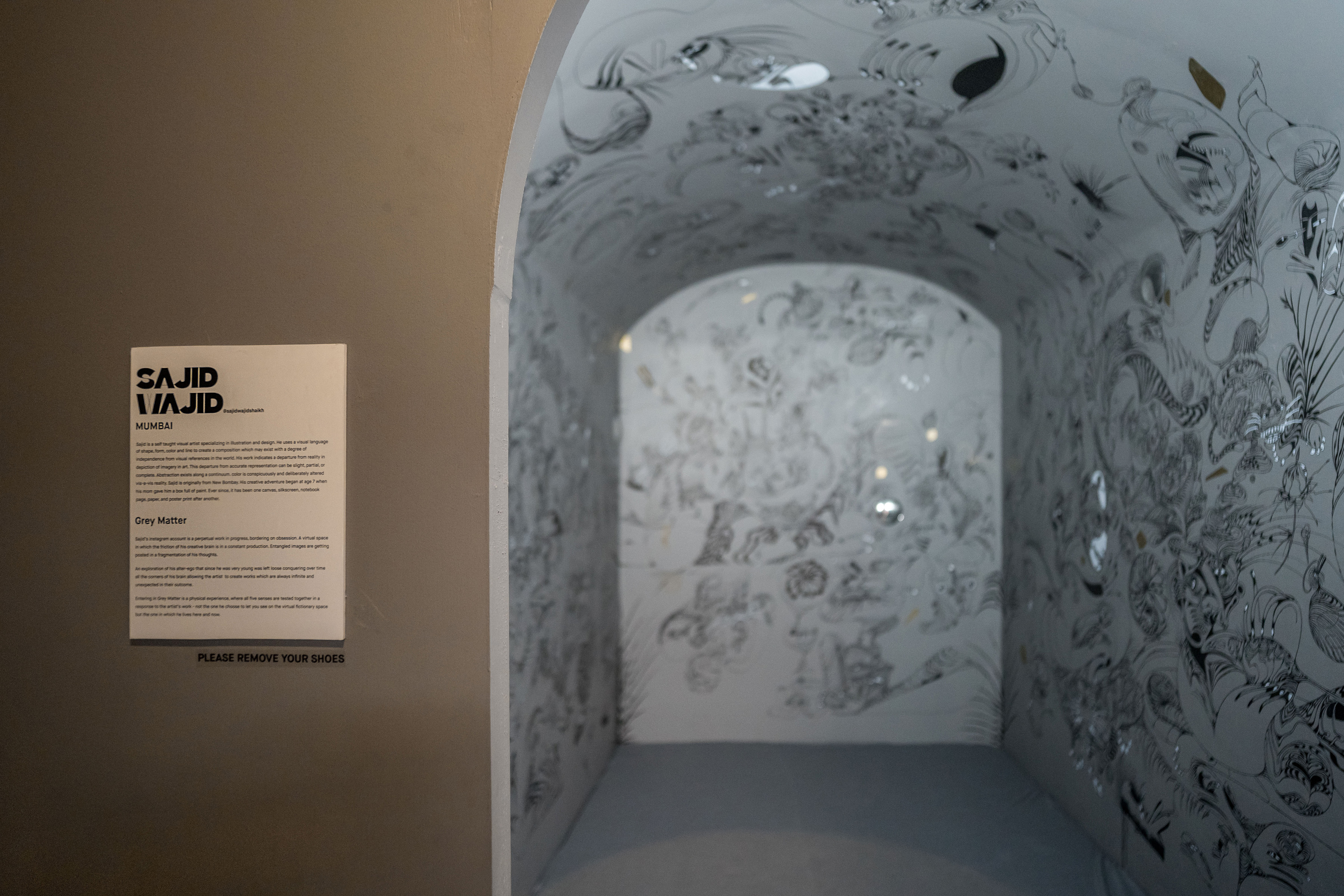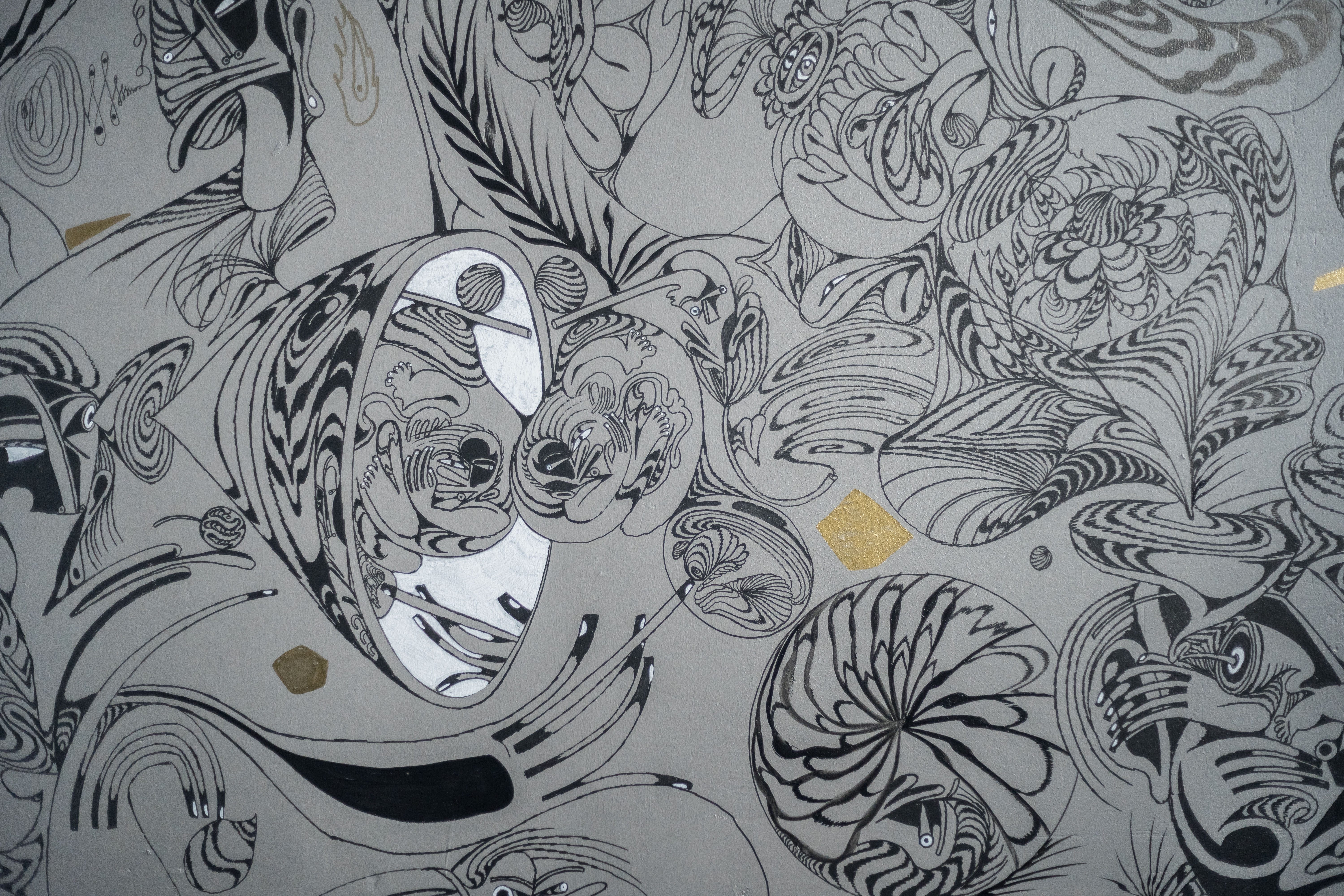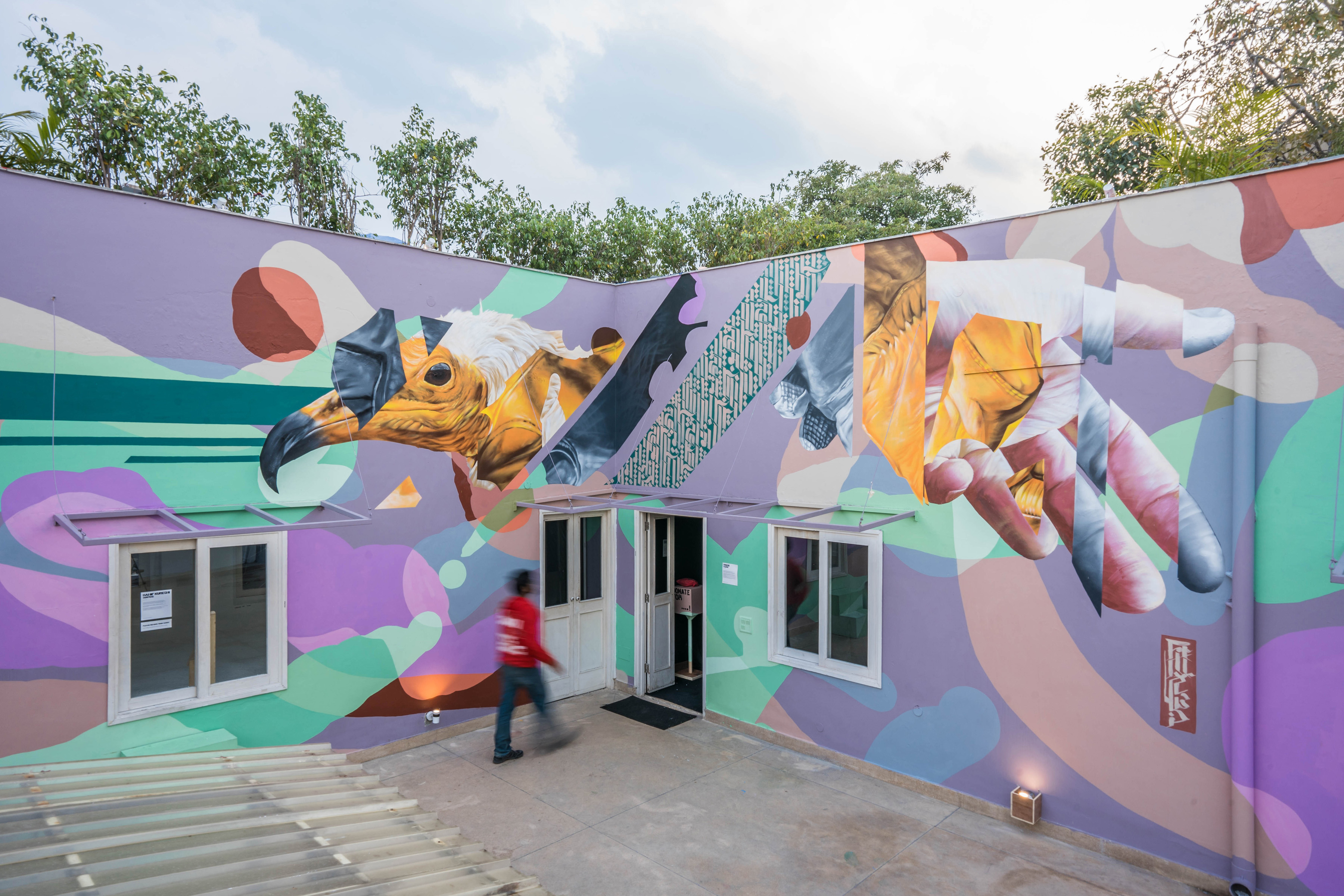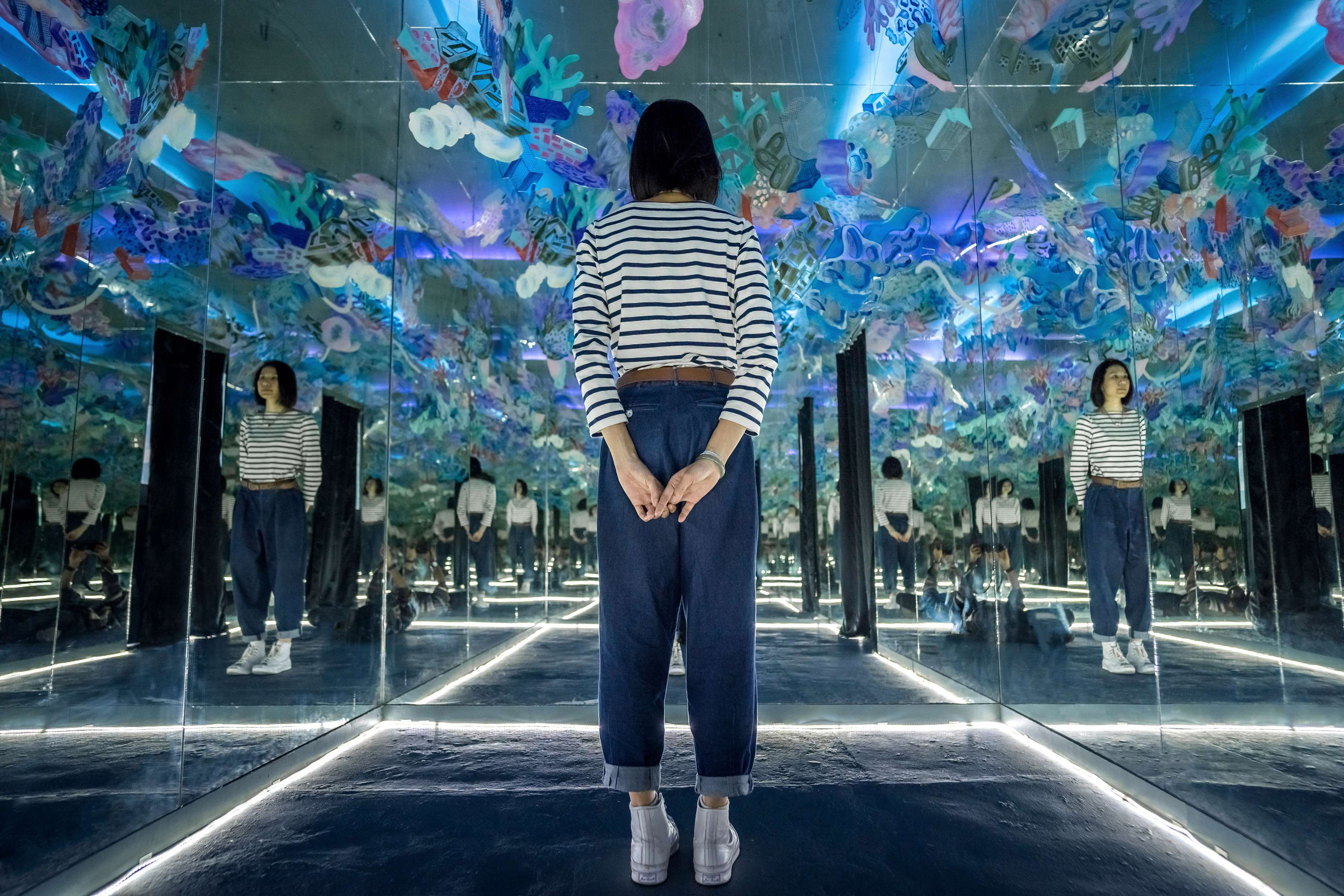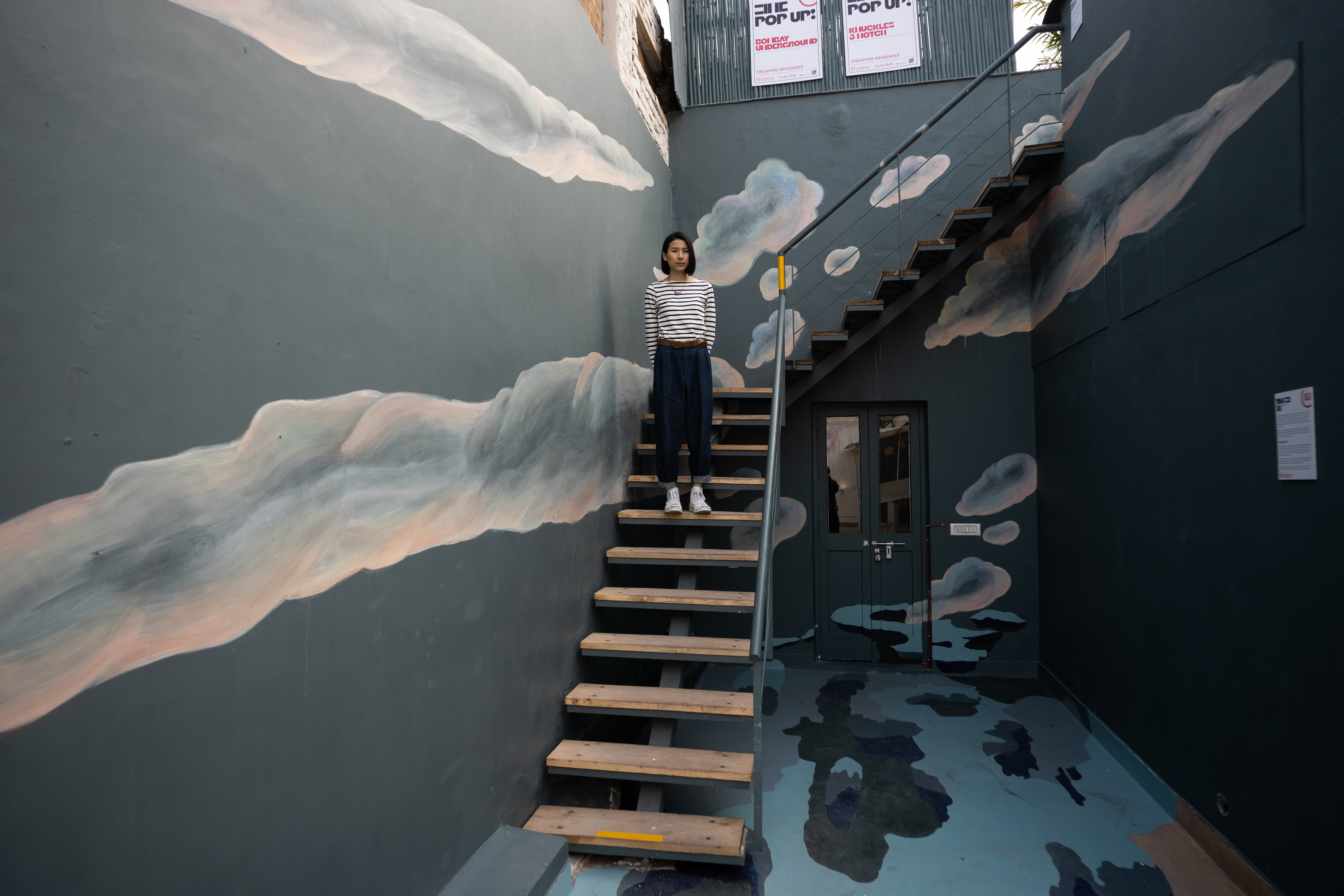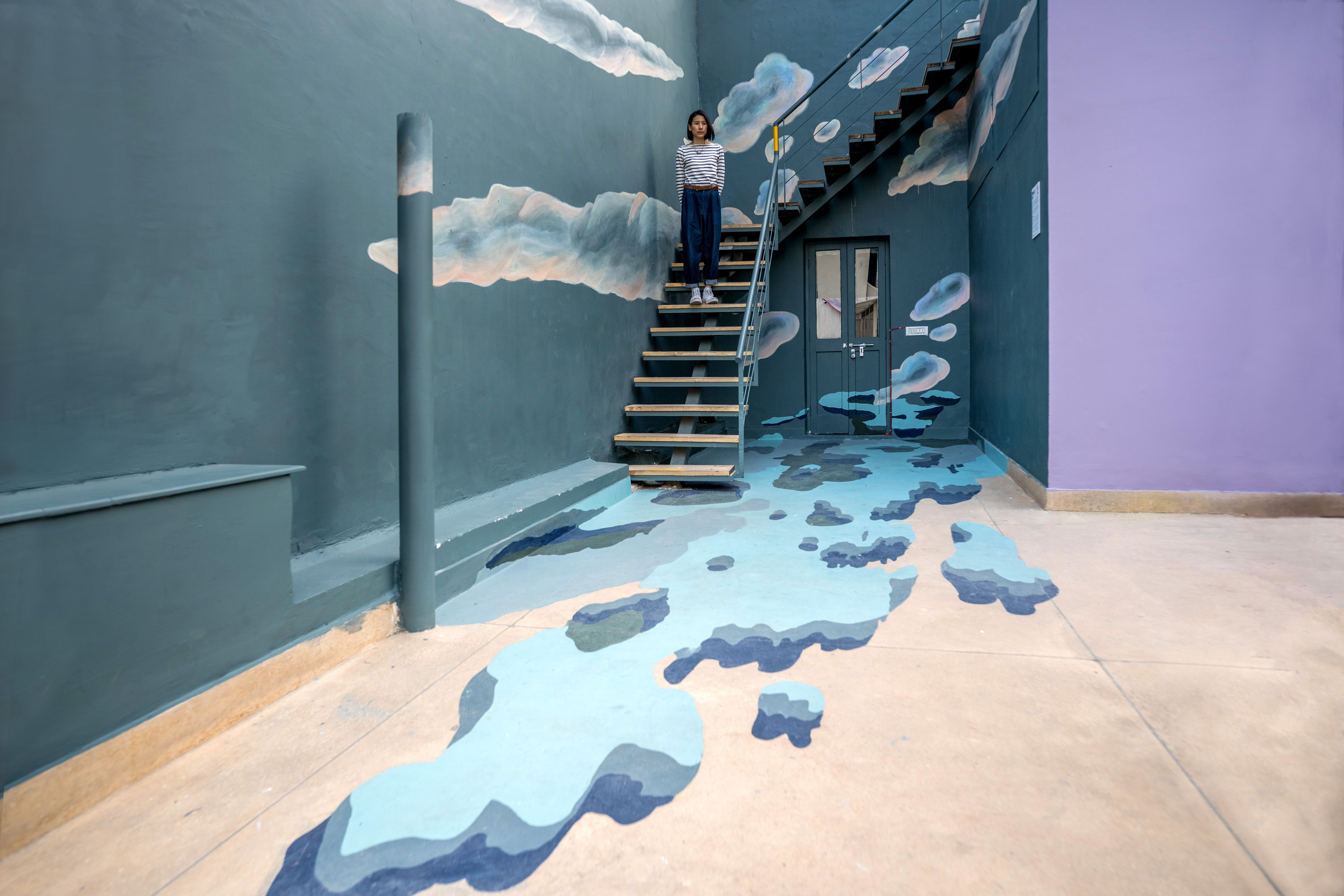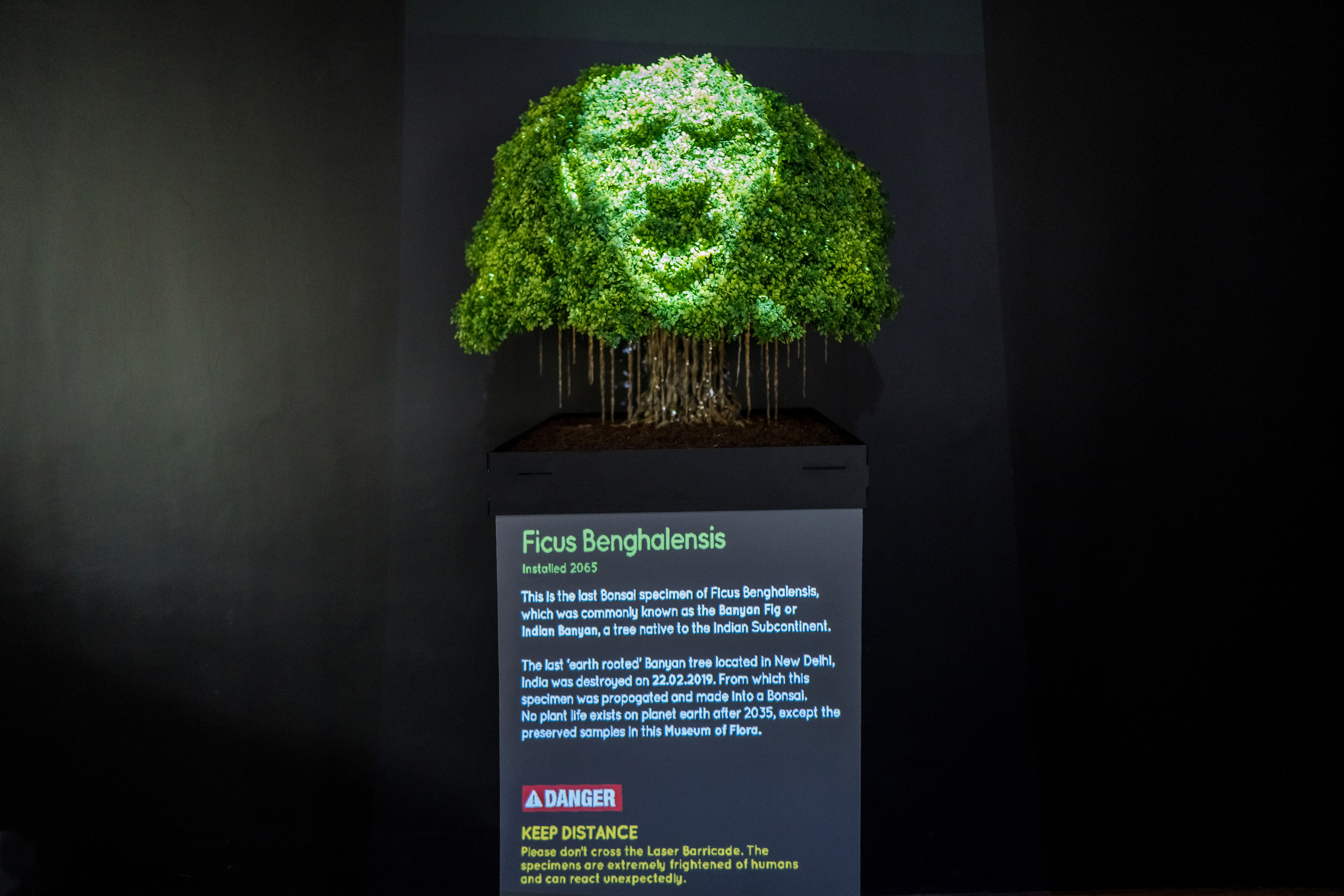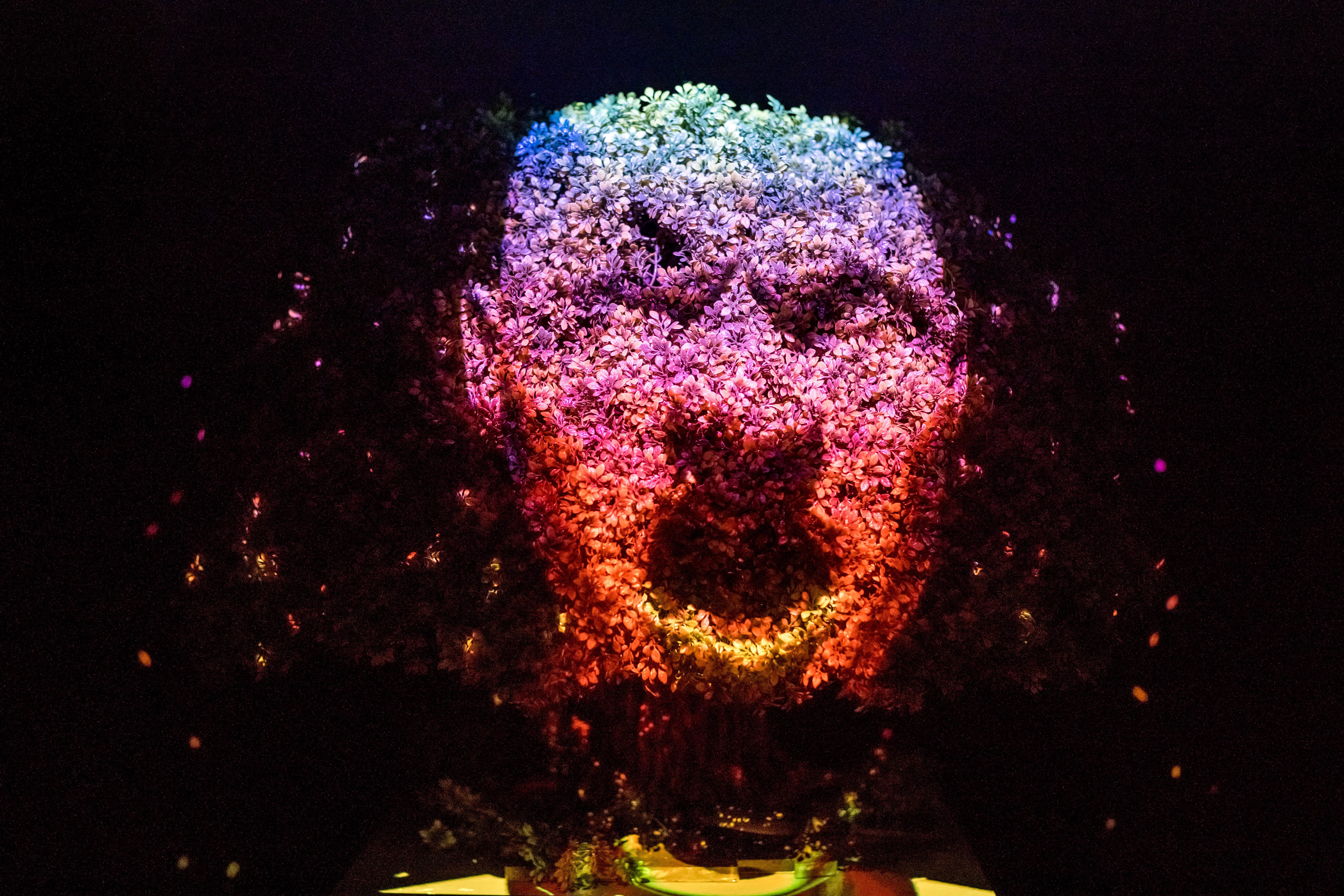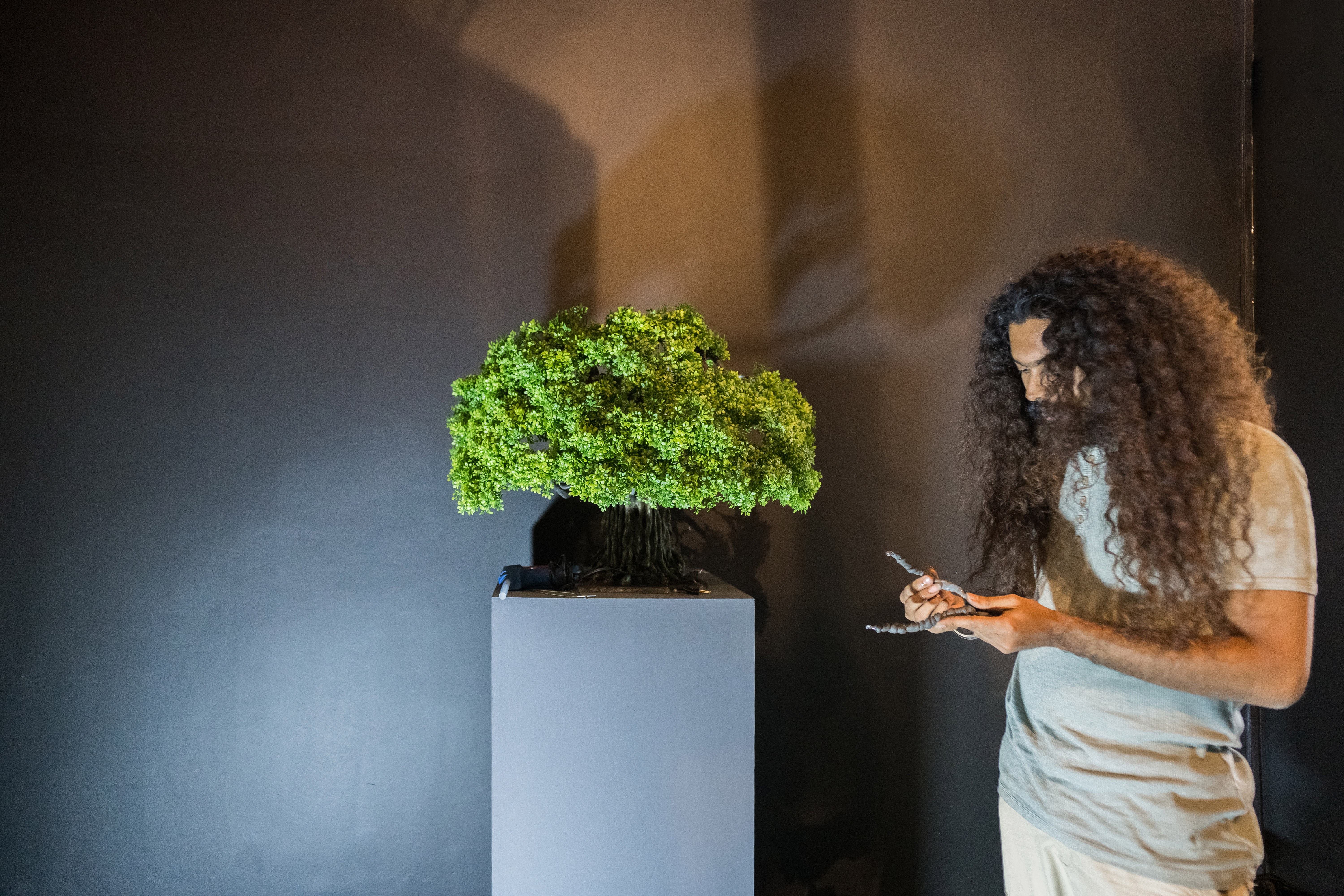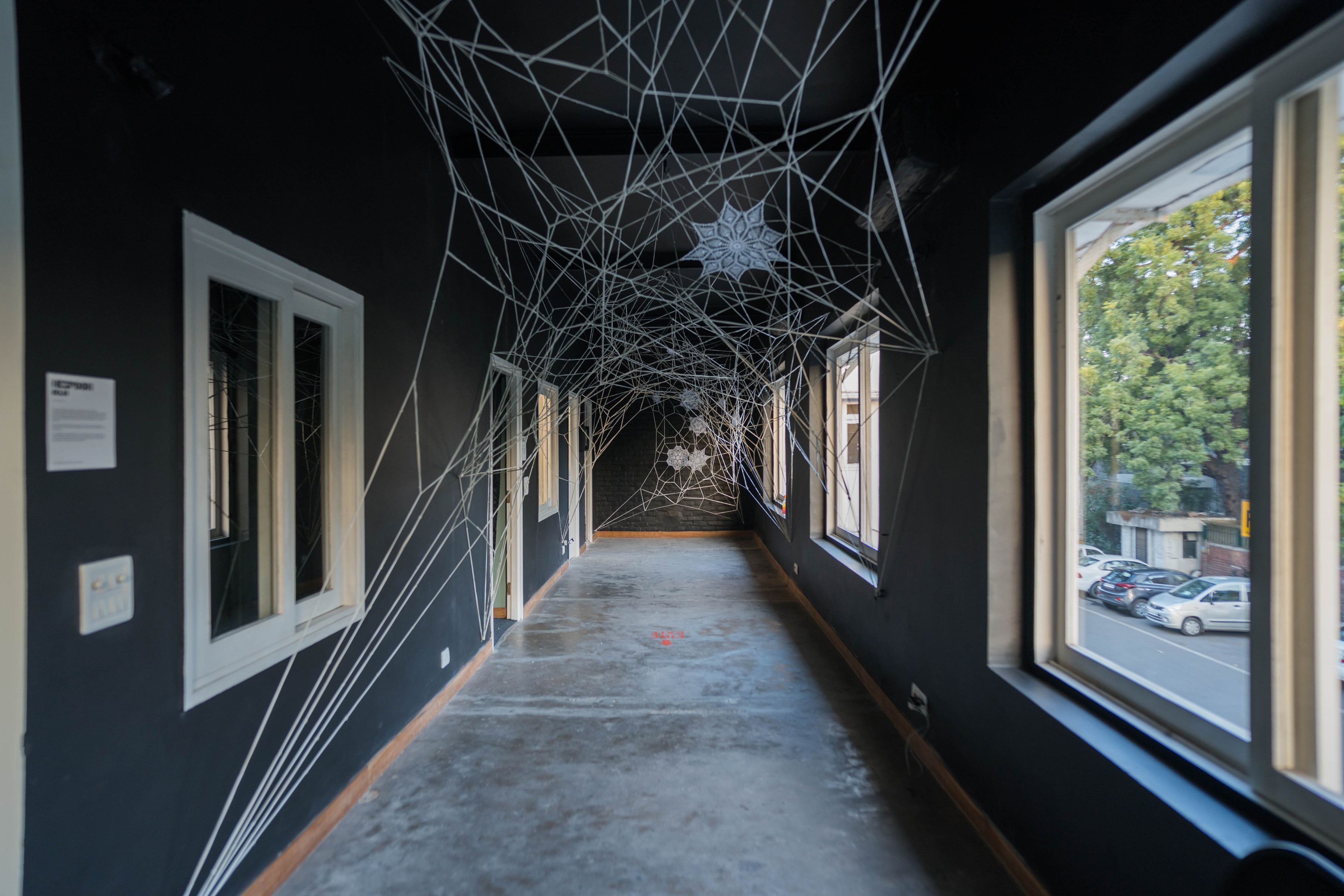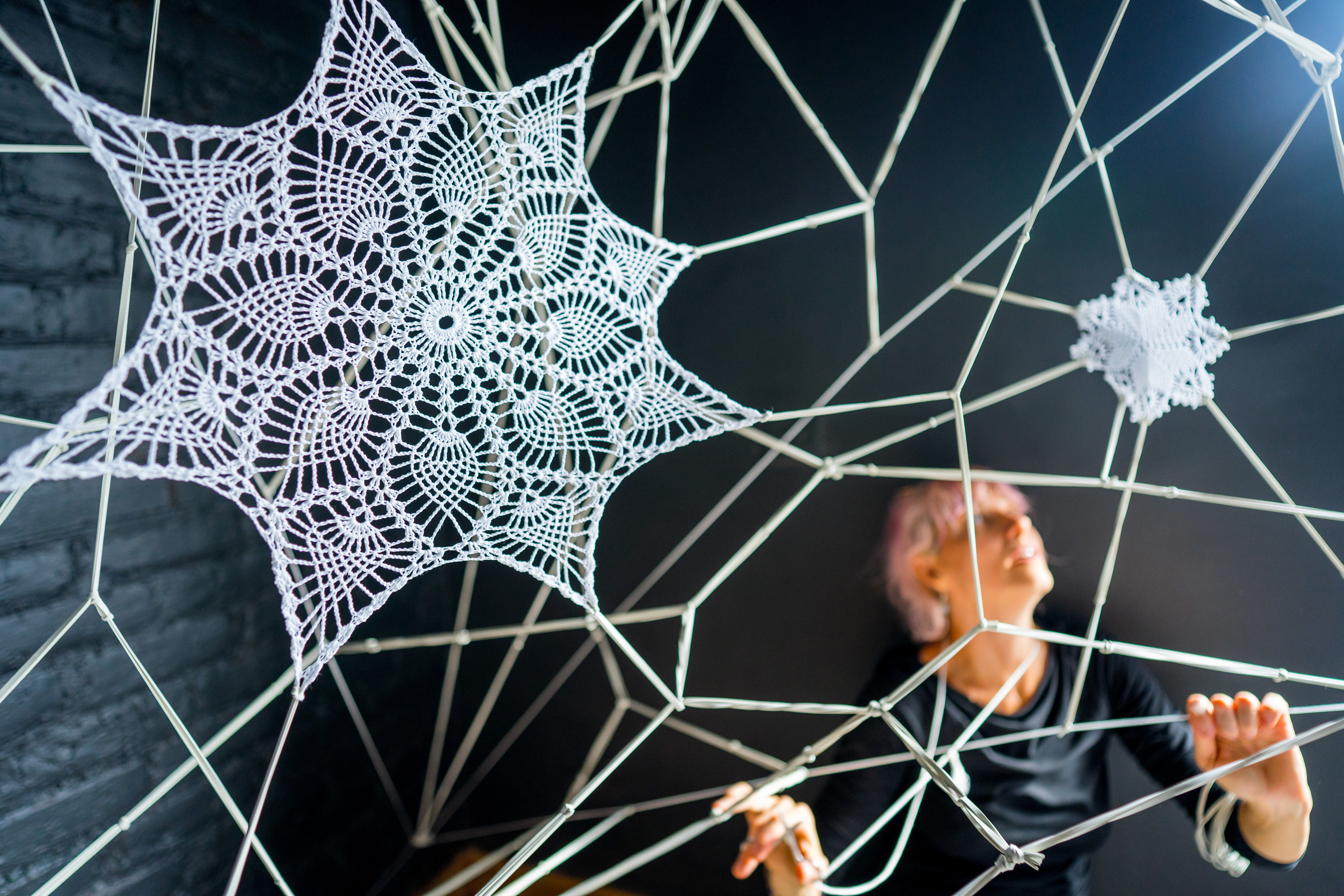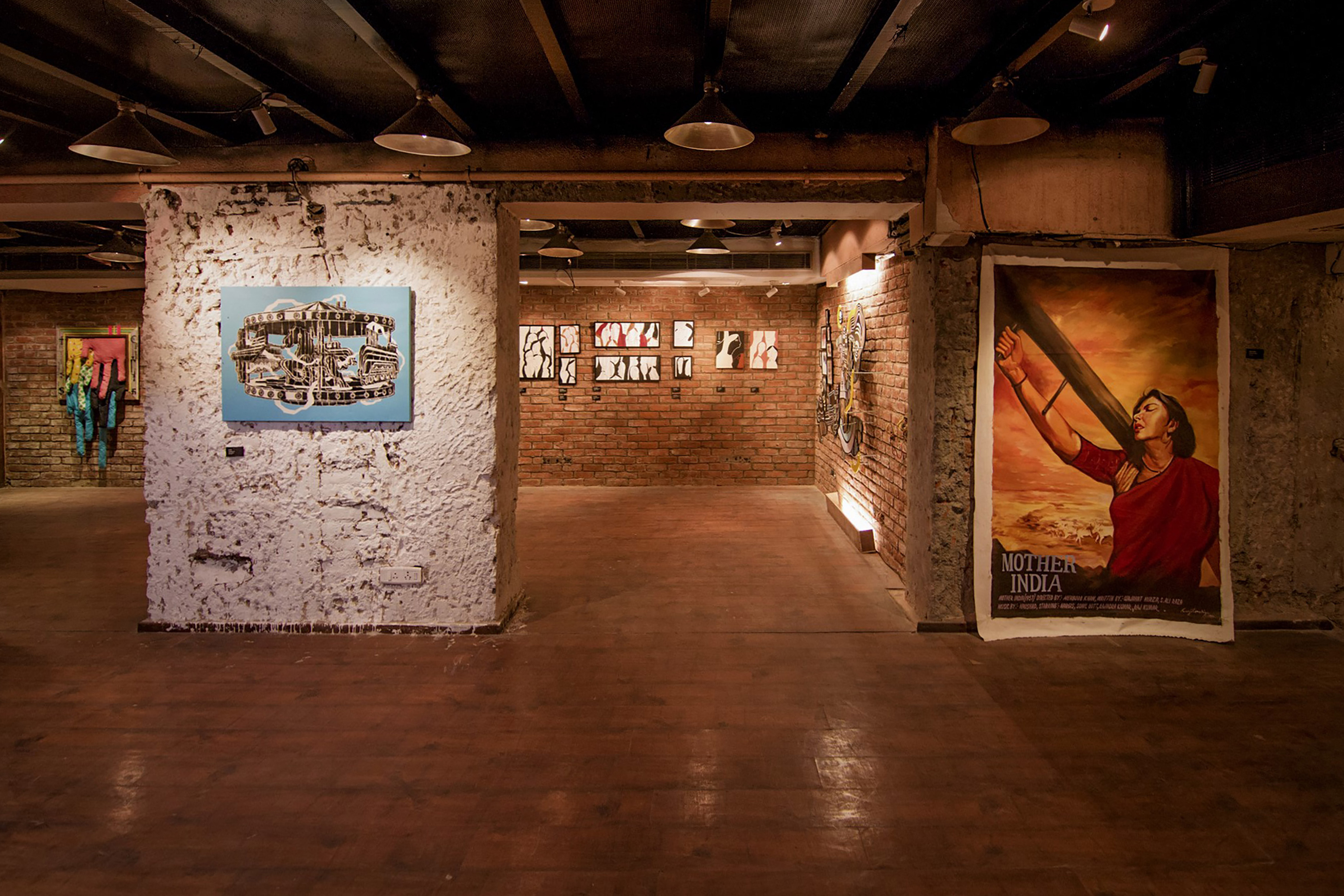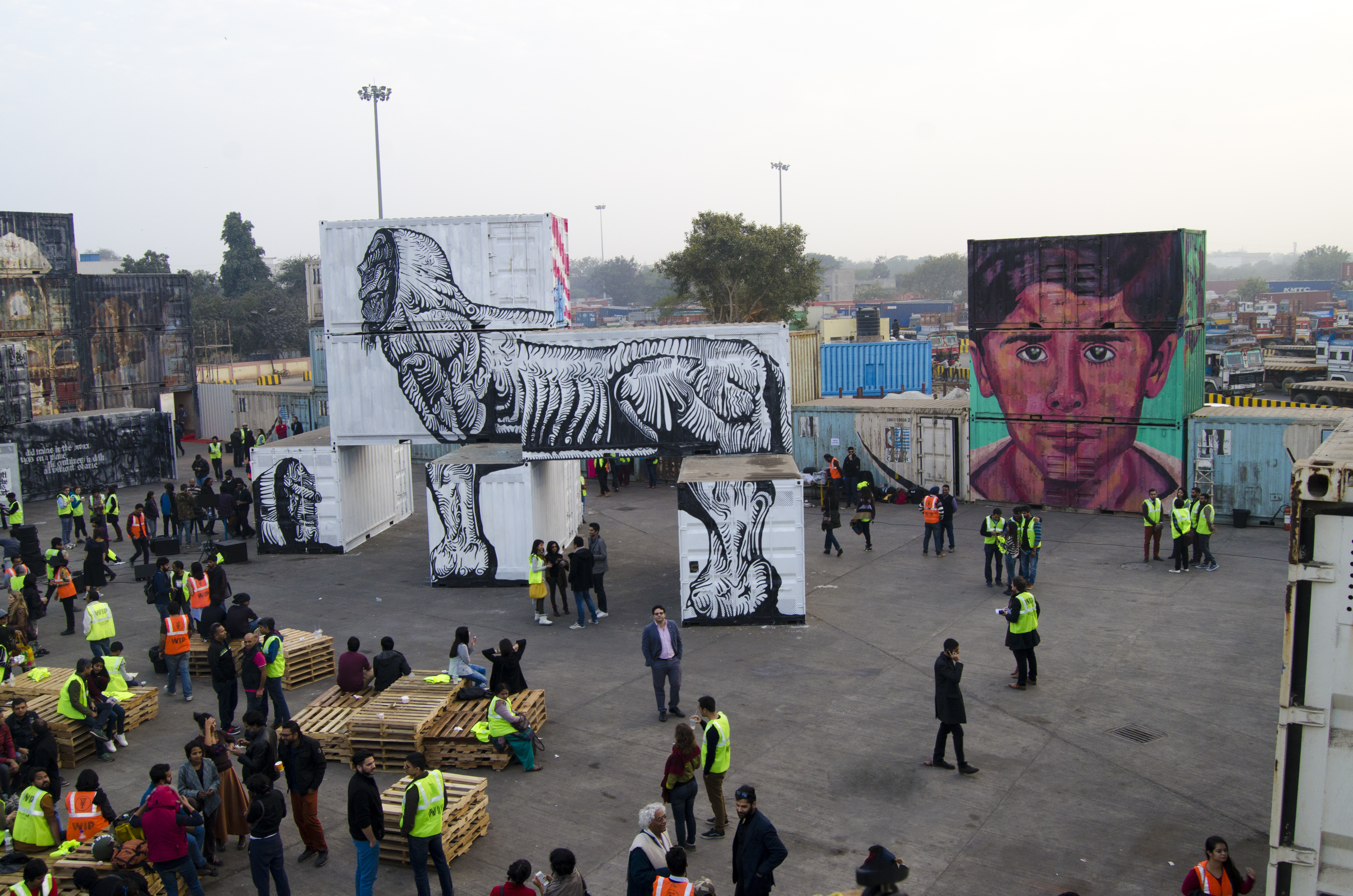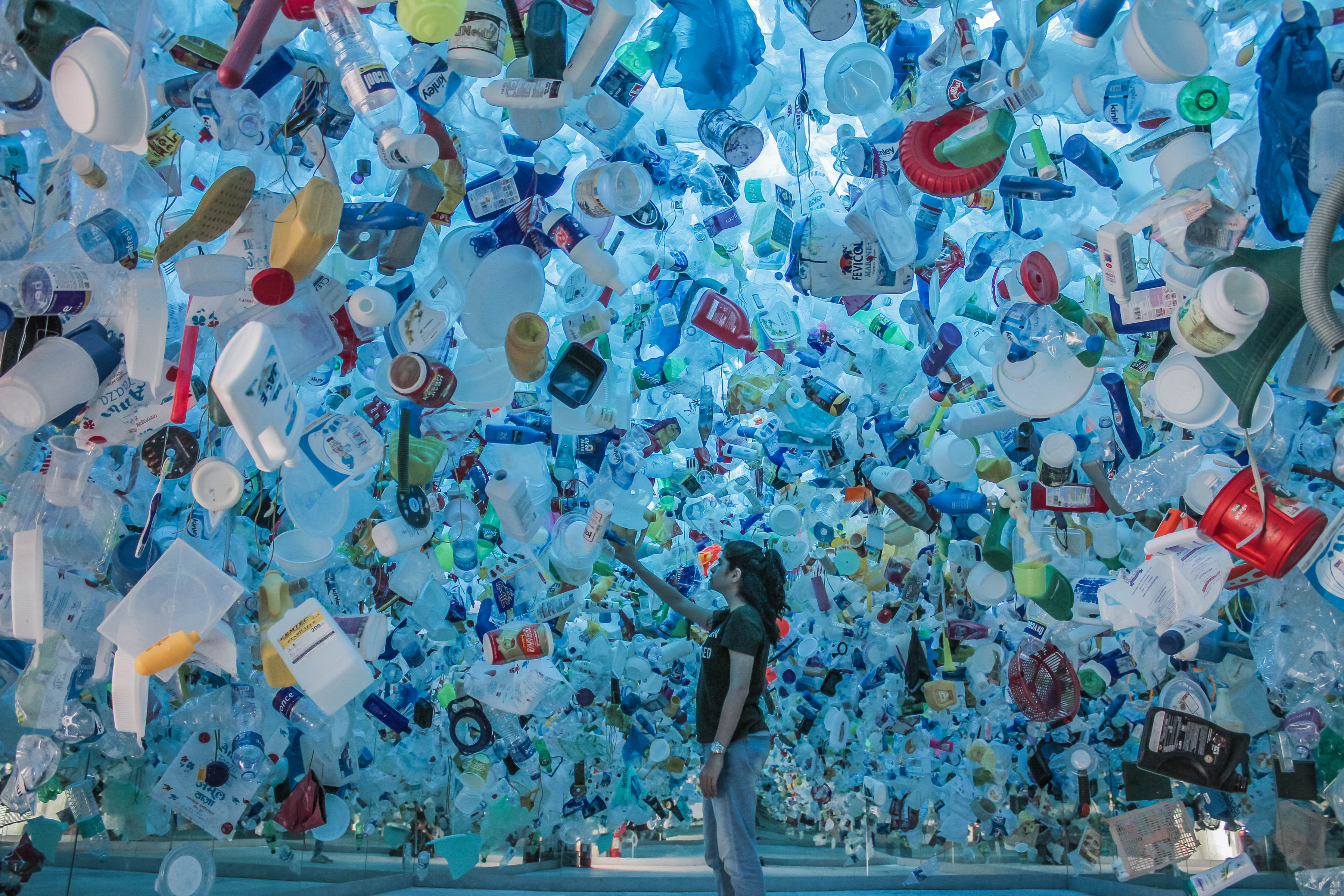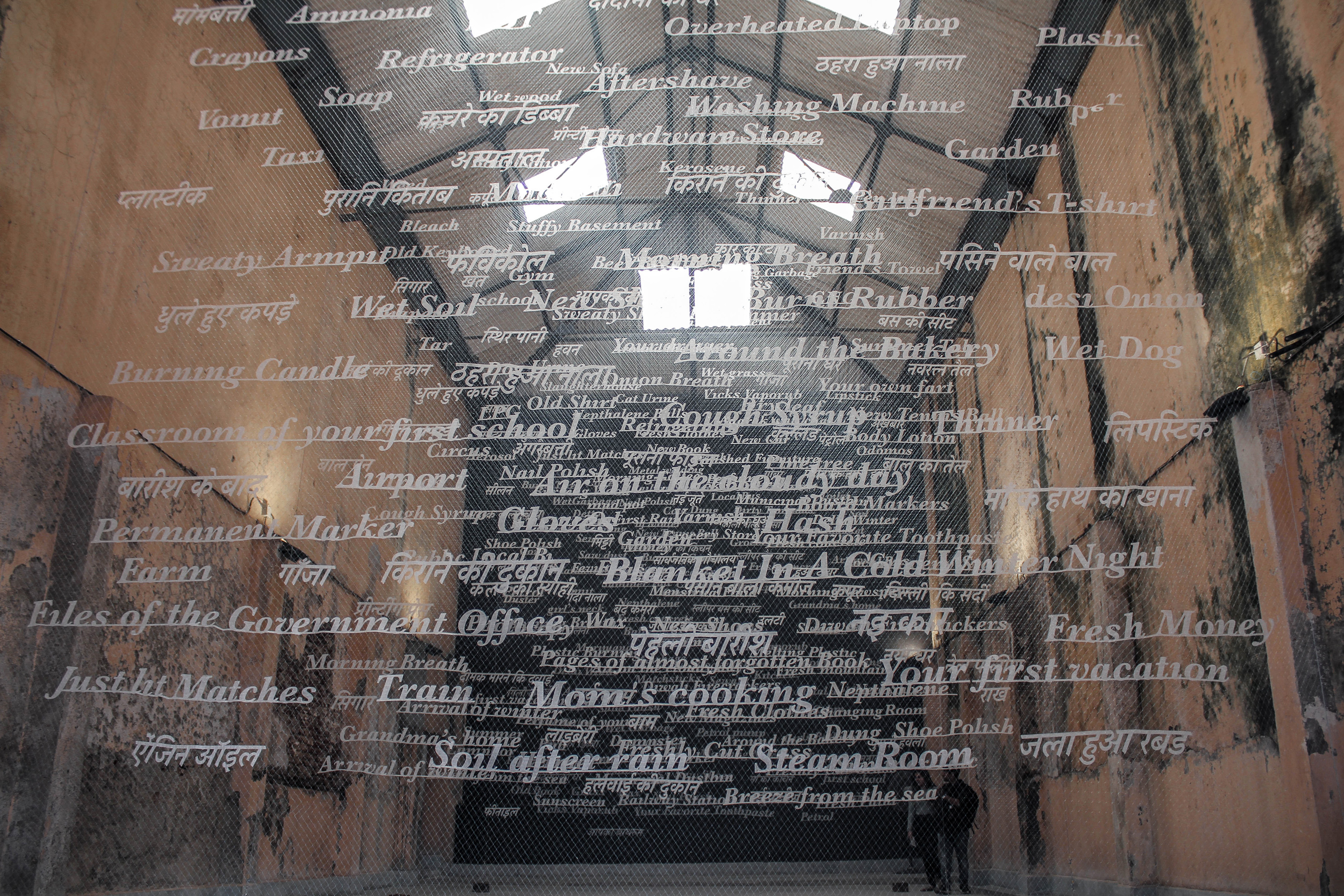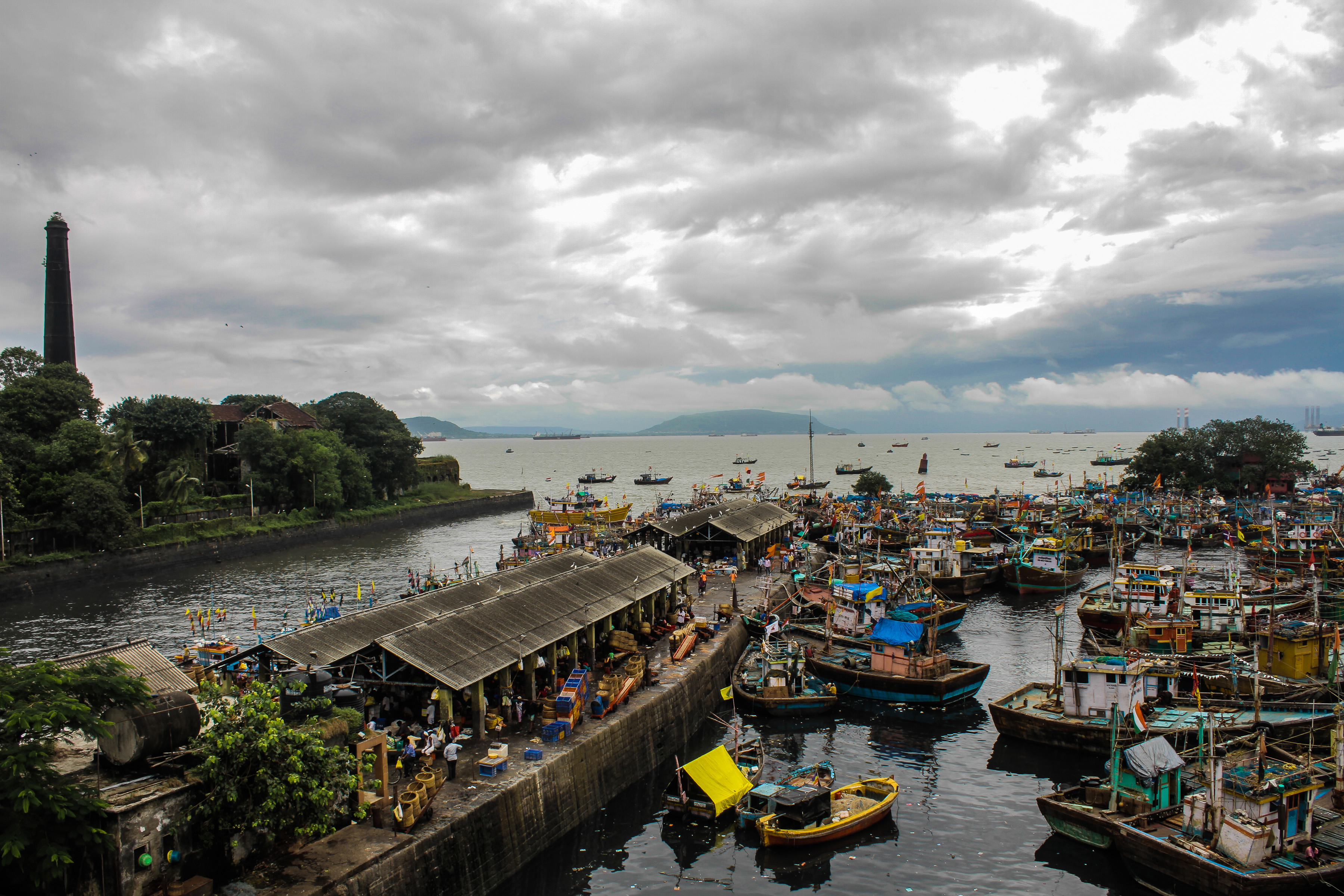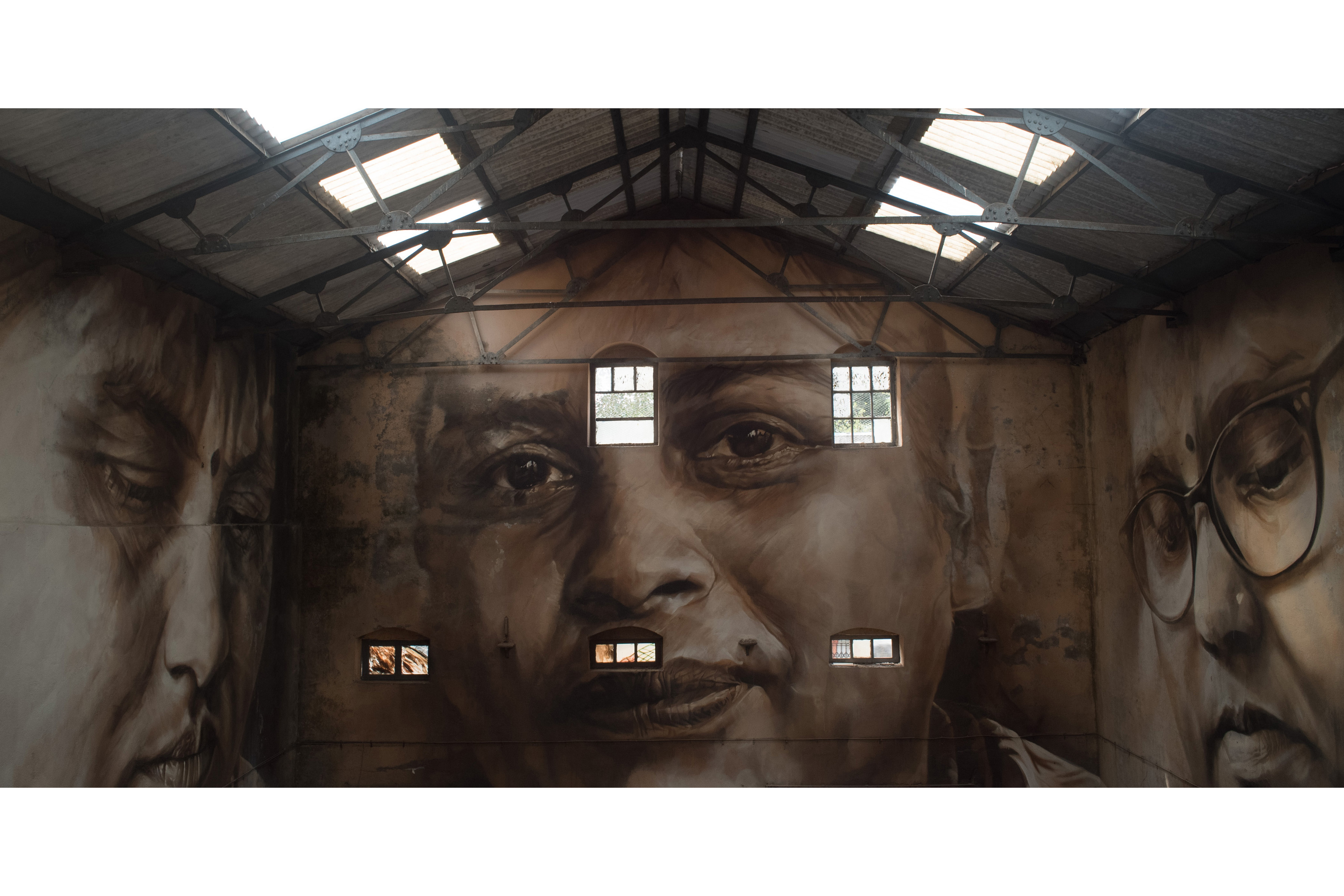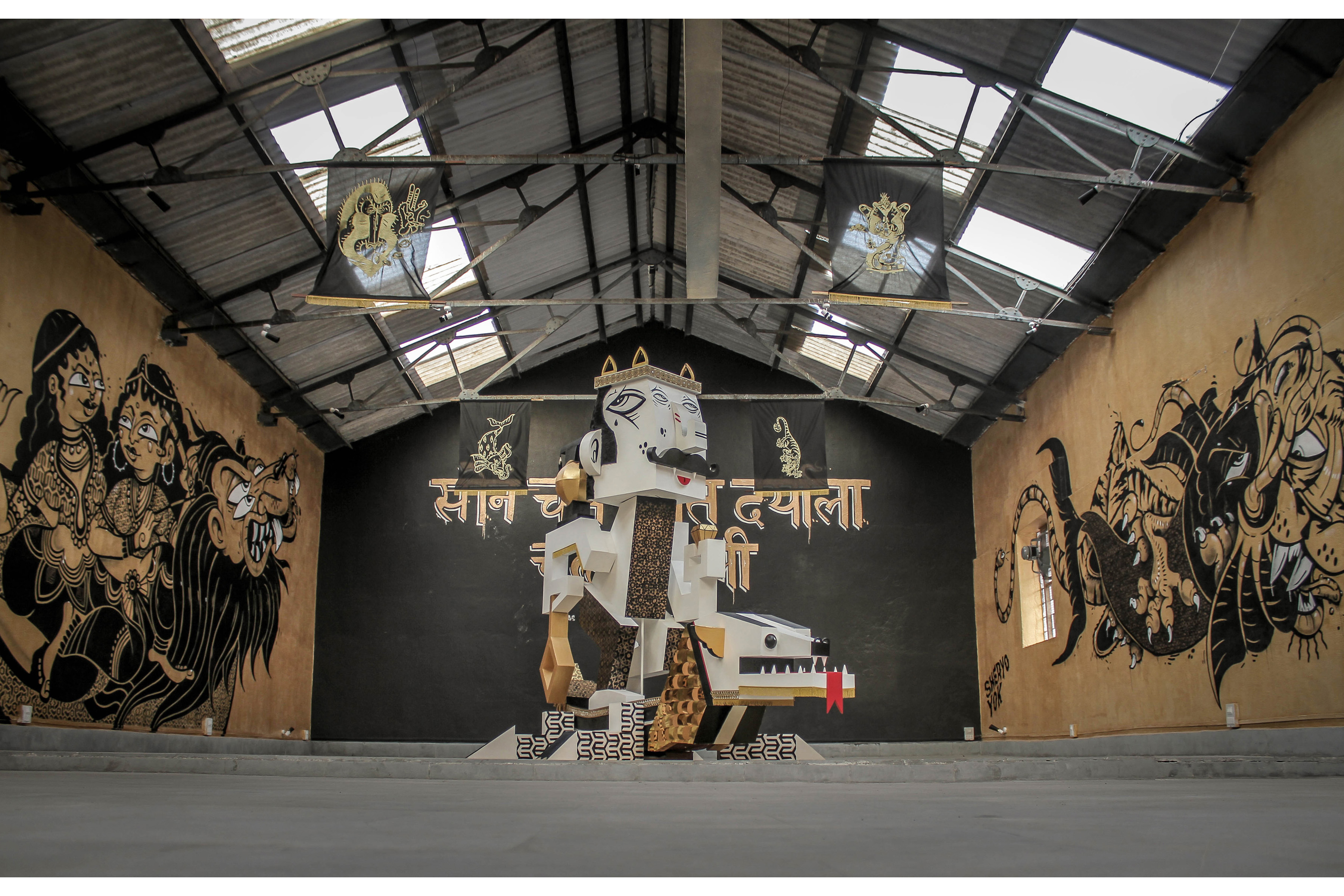F(r)iction at KONA: An immersive walk-through of multimedia artworks by national and international artists. The temporary exhibition invited the public to dig into the complexities of our lives entangled indichotomies and cross-pollinations between technology, art and nature.
Technology is changing our interactions with what all surrounds us, with nature, with ourselves within it as well as the viewership and creation of art. Thanks to technology also our definition of what art is made us capable of thinking about it in a more dynamic, open-minded
way. It has also increased accessibility to art, making it no longer a realm of the elite. But does the desire for a captivating Instagram picture dilute the reason for art to be? Urban Contemporary Art, St+artIndia's domain, became popular majorly thanks to the social media power, F(r)iction is an occasion to present this movement and its dynamics while presenting different perspectives through the artists' lenses.
Site-specific installations, videos, interactive multimedia pieces and murals transform the venue of Kona – in Jor Bagh Market – into a parallel universe of frictions and fictions, from 16th February until mid-march 2019.
Placed at the centre of the “good vs. bad” debate perennially, the Internet nonetheless plays a fairly important part in our lives today. As its usage continues to grow and reach corners which were previously inaccessible, one is bound to take stock of its effects on us, as a population and our culture. Using the easy accessibility it provides us as a starting point, several artists at F(r)iction engaged with the ramifications of living in an increasingly digital world.
Upon visiting Kona, the public was first greeted by the open-to-multiple-interpretations work of Dutch artist Daan Botlek. In his signature style, the human figure was at the heart of Daan’s work, and as always he made it a point to not ascribe a particular interpretation to his piece.
Placed at the center of the “good vs. bad” debate perennially, the Internet nonetheless plays a fairly important part in our lives today. As its usage continues to grow and reach corners which were previously inaccessible, one is bound to take stock of its effects on us, as a population and our culture. Using the easy accessibility it provides us as a starting point, several artists at F(r)iction engaged with the ramifications of living in an increasingly digital world.
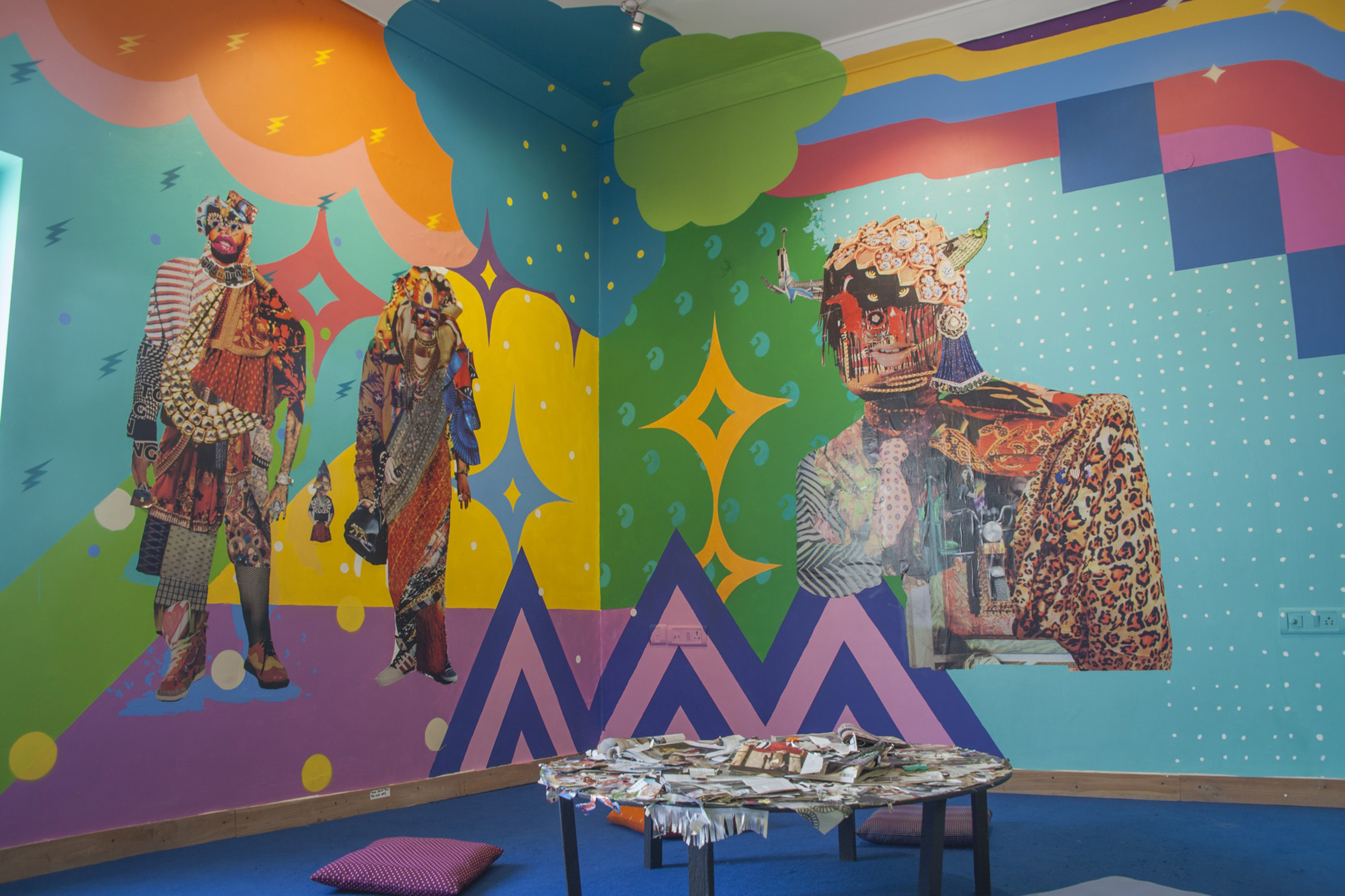
In an increasingly connected world, where the concepts of globalisation, industrialisation and urbanisation form a major chunk of most headlines today, artists also delved in to engage with what gets left behind in their wake. Dealing with the realities of climate change, loss of cultural heritage, and harm caused in the name of development, their pieces invited visitors to experience the artists’ perspectives on the cross pollination amongst art, culture and technology.
Artists NeSpoon and Tellas created installations with a focus on the increasing number of pleasant encounters we can now access because of technology. Their works immersed visitors in experiences that sparked joy and allowed for a positive interpretation of change.
With several thought-provoking takes on the interaction amongst many almost-omnipresent elements today i.e. technology in conversation with art and culture, F(r)iction culminated with an abstract composition created by the Indian artist duo of Do & Khatra.
